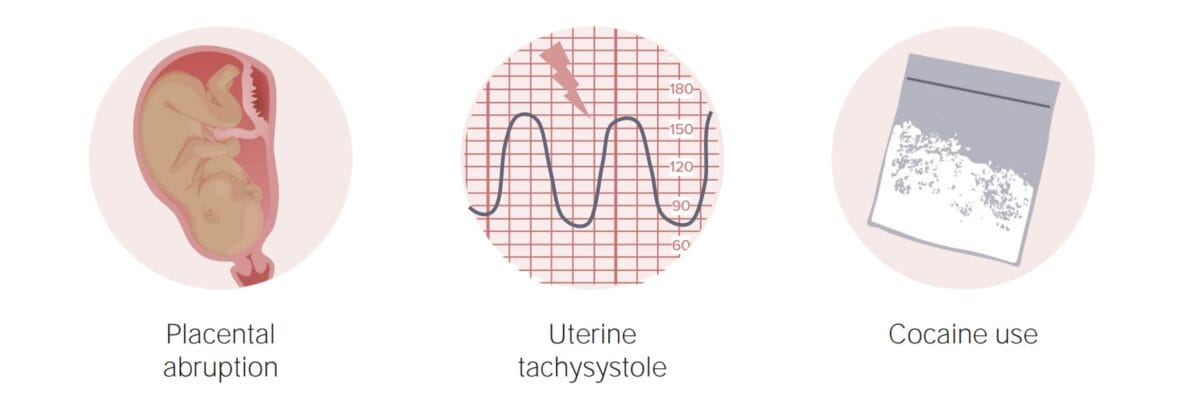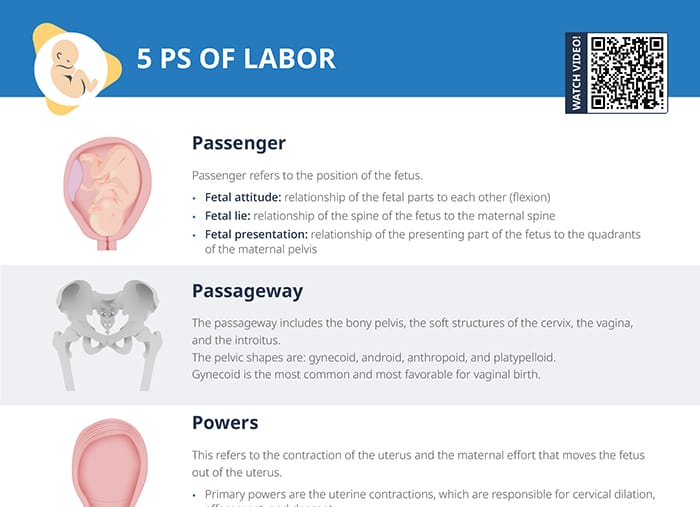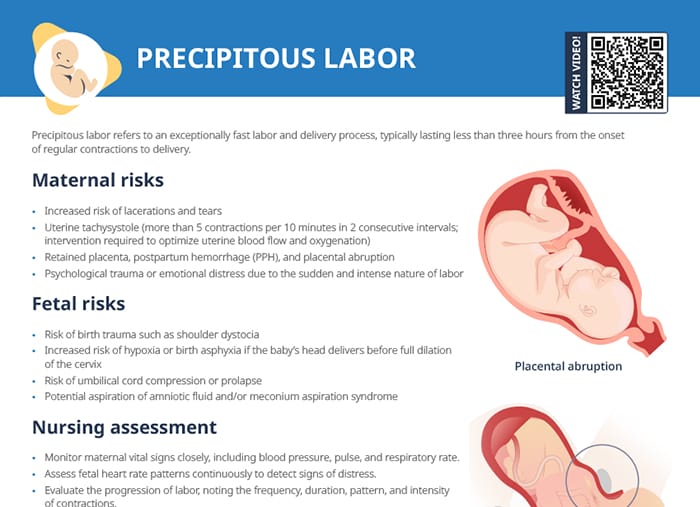What is precipitous labor?
Definition: Precipitous labor refers to an exceptionally fast labor and delivery process, typically lasting less than three hours from the onset of regular contractions to delivery.
Precipitous labor is relatively rare (about 3% of births). A precipitous labor and delivery is most common in women who exhibit risk factors like high blood pressure, drug exposure, induced labor, and a smaller baby. The exact causes of precipitous labor, however, are unknown.

Risks of precipitous delivery
Maternal risks
- Lacerations and tears
- Uterine tachysystole (more than 5 contractions per 10 minutes in 2 consecutive intervals)
- Retained placenta
- Postpartum hemorrhage (PPH)
- Placental abruption
- Psychological trauma or emotional distress due to the sudden and intense nature of labor
Fetal risks
- Birth trauma such as shoulder dystocia
- Hypoxia or birth asphyxia if the baby’s head delivers before full dilation of the cervix
- Umbilical cord compression or prolapse
- Potential aspiration of amniotic fluid and/or meconium aspiration syndrome
Nursing assessment and client education
- Monitor the maternal vital signs closely (including blood pressure, pulse, and respiratory rate).
- Continuously assess the fetal heart rate patterns to detect signs of distress.
- Evaluate the progression of labor, noting:
- Contraction frequency
- Contraction duration
- Contraction pattern
- Intensity
- Assess the birthing person’s emotional state and provide reassurance and support.
- Inform the client about when to seek immediate medical assistance if labor progresses rapidly or if any concerning symptoms arise.
- Educate the client about the signs and symptoms of precipitous labor, including rapid and intense contractions, sudden urge to push, and feelings of pressure in the pelvis.
- Provide information on postpartum recovery, including the importance of seeking medical attention for any signs of complications such as excessive bleeding or pain.
Nursing interventions for precipitous labor and delivery
Tip: Have a precipitous birth kit prepared in the room.
Focus on the safety of the mother and infant:
- Call 911 if outside the hospital.
- Position the client to optimize fetal descent and reduce the risk of injury.
- Support the baby’s head as it emerges.
- Prepare for emergency interventions to manage shoulder dystocia and/or cord prolapse.
Support the birthing client:
- Encourage comfort measures such as breathing techniques and back rubs to manage anxiety and pain.
- Provide coaching and support during the pushing phase to minimize trauma.
- Administer pain relief options, if time allows.

